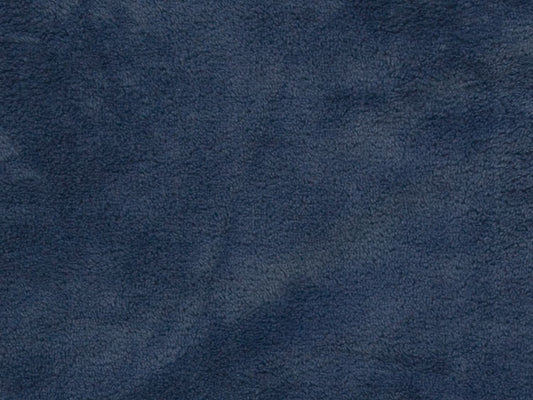-
Doubleface plush fabric - mustard
Regular price €7,45 EURRegular priceUnit price €14,90/m -
Doubleface plush fabric - anthracite
Regular price €7,45 EURRegular priceUnit price €14,90/m -
Doubleface plush fabric - anthracite
Regular price €7,45 EURRegular priceUnit price €14,90/m -
Doubleface plush fabric - anthracite
Regular price €7,45 EURRegular priceUnit price €14,90/m -
Doubleface plush fabric - anthracite
Regular price €7,45 EURRegular priceUnit price €14,90/m -
Doubleface plush fabric - anthracite
Regular price €7,45 EURRegular priceUnit price €14,90/m -
 Sold out
Sold outDoubleface plush fabric - grey
Regular price €8,95 EURRegular priceUnit price €17,90/m -
Doubleface plush fabric - grey
Regular price €8,95 EURRegular priceUnit price €17,90/m -
Doubleface plush fabric - grey
Regular price €8,95 EURRegular priceUnit price €17,90/m -
Doubleface plush fabric - grey
Regular price €8,25 EURRegular priceUnit price €16,50/m -
Doubleface plush fabric - grey
Regular price €8,25 EURRegular priceUnit price €16,50/m -
 Sold out
Sold outDoubleface plush fabric - grey
Regular price €8,25 EURRegular priceUnit price €16,50/m -
Doubleface plush fabric - grey
Regular price €8,25 EURRegular priceUnit price €16,50/m -
Doubleface plush fabric - grey
Regular price €8,25 EURRegular priceUnit price €16,50/m -
Plush - Cuddly Fleece - marine
Regular price €4,95 EURRegular priceUnit price €9,90/m -
Plush - cuddly fleece - denim blue
Regular price €4,95 EURRegular priceUnit price €9,90/m
Collection: Fleece & Plush
Fleece Fabric Material Science
How is fleece made and what properties does fleece fabric have?
Natural fibers such as cotton and synthetic fibers such as polyester are primarily used to make fleece. Regardless of the material, fleece is not woven but knitted. The loops that are incorporated specifically for this purpose, the plush handles, are separated during the production process to create the characteristic soft fleece properties, such as the fluffiness. This creates a material that feels like thick fur. Despite the dense feel, fleece is a very light material.
Fleece is characterized by its low weight. Due to its structure, the material keeps cold and wetness away from the body for some time. It is not completely waterproof, but it forms a temporary barrier against moisture penetration, depending on the water load, so low to moderate moisture takes some time to pass through. The breathable material also dries very quickly. Fleece is also often used as an inner lining for autumn and winter clothing, as it keeps body heat inside well and thus acts as a heat insulator. Fleece fabric not only keeps your own heat inside the clothing well, but is also particularly soft on the skin and is therefore very comfortable to wear. Fleece is a hard-wearing, robust material. It is also characterized by the fact that it is stretchy or elastic and is therefore practically crease-resistant. When subjected to heavy use, fleece can tend to form small knots on the surface due to the way it is made. These can form in areas that are particularly heavily used due to matting caused by wear and tear. In technical terms, this effect is known as “pilling”. However, in order to maintain the great properties and, above all, the pleasant feel, manufacturers are increasingly offering fleece fabrics with an “anti-pilling” property. The fleece fabrics that hardly felt include:
- cotton fleece
- Doubleface fleece (double layer)
- softshell fleece
- knitted fleece
- Wellness Fleece (very cozy)
What can you sew with fleece fabric by the meter?
Fleece is the perfect choice when autumn and winter arrive. Its all-round properties make it an ideal companion during this time. It is not only waterproof, but also keeps you pleasantly warm and feels wonderful to the touch. Fleece fabric is great for snuggling up in, which makes the material very popular with children. Fleece is also often used at home, for example on the cozy couch. However, its primary use is in protective and warm functional clothing. Fleece can be used very well for the following DIY sewing projects, for example:
- Cover
- jackets
- ski jackets
- west
- sweater
- Pants
- hats
- Gloves
- children's clothing
How is fleece processed and how is the textile cared for?
What must be taken into account when cutting and sewing fleece fabrics?
Fleece sold by the meter generally does not cause any problems when cutting. It is an elastic and stretchy material, but it is very easy to handle, in contrast to other elastic materials, which are more difficult. The textile is made of a durable, dense mesh, which means that sharp scissors or a sharp rotary cutter are required when cutting. The cut edges of fleece do not necessarily have to be finished, as this textile does not usually pull threads and therefore does not fray. This material can then be processed with an open edge.
When sewing with a sewing machine, it is recommended to use a suitable sewing needle to process fleece fabric in order to avoid breaking the thread and to prevent the sewing machine from skipping any stitches. The particularly slim Micro-Tex needle and the rounded jersey sewing needle are suitable for this. When choosing the stitch pattern, you should remember that fleece is a stretchy, elastic material. Consequently, an elastic stitch or zigzag stitch should be used for the seam.
How do you care for fleece?
When it comes to textile care, fleece fabric is quite easy to handle. The fabric can usually be washed in the washing machine at up to 30°C. Bleach should not be used.
Due to the heat effect, fleece should not be dried in the dryer. It usually comes out of the machine almost dry and only needs to be dried briefly in the fresh air.
Fleece can actually be ironed easily at low to medium heat without the use of steam. However, since fleece fabrics are elastic and therefore crease-resistant, ironing is actually not necessary.
Discover softshell now!















